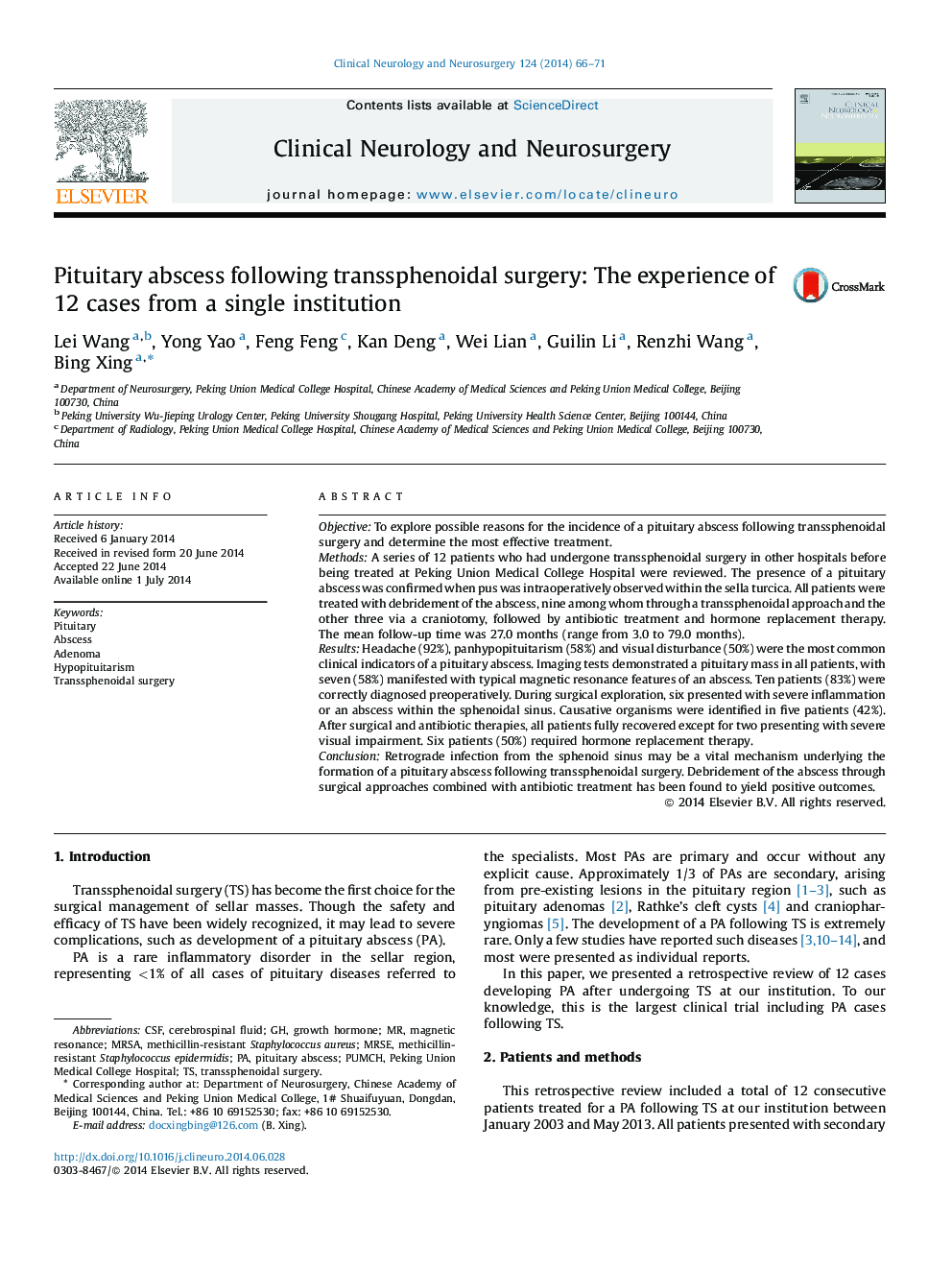| کد مقاله | کد نشریه | سال انتشار | مقاله انگلیسی | نسخه تمام متن |
|---|---|---|---|---|
| 3040096 | 1579698 | 2014 | 6 صفحه PDF | دانلود رایگان |
• We discuss possible reasons for the development of a pituitary abscess following transsphenoidal surgery and to determine the most appropriate treatment.
• A series of 12 patients who had undergone transsphenoidal surgery in other hospitals before being treated at Peking Union Medical College Hospital were reviewed.
• Retrograde infection from the sphenoid sinus may be a vital mechanism underlying the formation of a pituitary abscess following transsphenoidal surgery.
• Debridement of the abscess through surgical approaches combined with antibiotic treatment has been found to yield positive outcomes.
ObjectiveTo explore possible reasons for the incidence of a pituitary abscess following transsphenoidal surgery and determine the most effective treatment.MethodsA series of 12 patients who had undergone transsphenoidal surgery in other hospitals before being treated at Peking Union Medical College Hospital were reviewed. The presence of a pituitary abscess was confirmed when pus was intraoperatively observed within the sella turcica. All patients were treated with debridement of the abscess, nine among whom through a transsphenoidal approach and the other three via a craniotomy, followed by antibiotic treatment and hormone replacement therapy. The mean follow-up time was 27.0 months (range from 3.0 to 79.0 months).ResultsHeadache (92%), panhypopituitarism (58%) and visual disturbance (50%) were the most common clinical indicators of a pituitary abscess. Imaging tests demonstrated a pituitary mass in all patients, with seven (58%) manifested with typical magnetic resonance features of an abscess. Ten patients (83%) were correctly diagnosed preoperatively. During surgical exploration, six presented with severe inflammation or an abscess within the sphenoidal sinus. Causative organisms were identified in five patients (42%). After surgical and antibiotic therapies, all patients fully recovered except for two presenting with severe visual impairment. Six patients (50%) required hormone replacement therapy.ConclusionRetrograde infection from the sphenoid sinus may be a vital mechanism underlying the formation of a pituitary abscess following transsphenoidal surgery. Debridement of the abscess through surgical approaches combined with antibiotic treatment has been found to yield positive outcomes.
Journal: Clinical Neurology and Neurosurgery - Volume 124, September 2014, Pages 66–71
